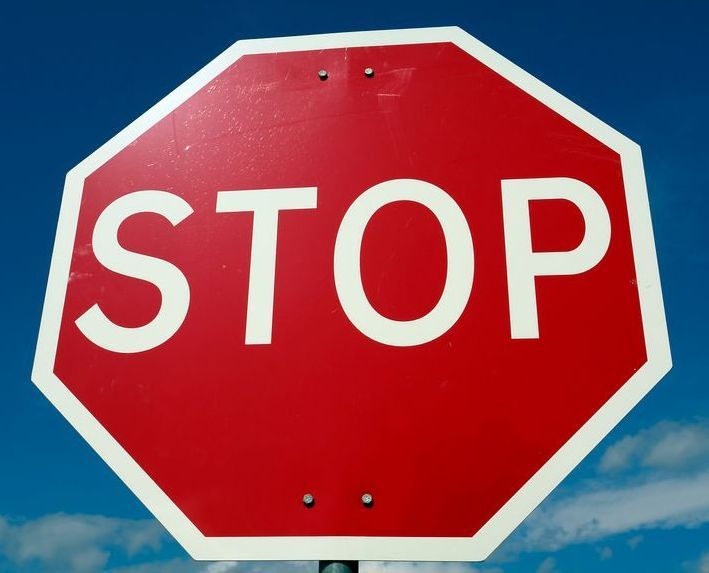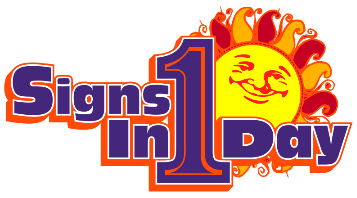
Reflective signs might not work for you
March 18, 2020 ©
By Tim Smith
Everyone wants their sign to be noticeable and you might think that making your sign reflective will make it super noticeable. After all, we’re all familiar with how stop signs light up at night and practically jump out at you with intense brightness. But this intensity only happens under specific circumstances and you may not get the results you want for your sign.
Why not? Stop signs and other traffic signs light up at night because the headlights from your car are reflected from the sign back to your eyes. The reflective material on the sign has either tiny glass beads or micro prisms in it that reflect light back to where it came from—this is called retroreflectivity. This kind of reflection is different from the way light is reflected off of most surfaces. Light usually acts like a bouncing ball: when it hits a surface at an angle it bounces off at the same angle the other way. This is how light reflects off a mirror or a lake. Not so with retroreflective material: the light bounces back to where it came from!
The important point here is that for retroreflective signs to work the viewer and the light source must be close together. When you’re in your car and your headlights are on, the retroreflective sign works great because you are close to the source of the light that is reflected back at you. But If you’re standing in front of a sign that is illuminated from above or below or the side, it doesn’t make much difference whether the sign is retroreflective or not because the reflected light won’t be reflected towards you. I’m not saying that light sources off to the side won’t illuminate the sign—they do—but retroreflective or not, you won’t see much of a difference.
About the only circumstance when it’s helpful to have reflective material on a sign is when it’s near a road where it will catch the headlights of passing vehicles. If the sign is set too far back from the road to catch the light from headlights, reflective material won’t be helpful.
The types of retroreflective films used in signmaking:
Type 1: Engineer Grade (beaded or micro-prismatic)
Type 3: High Intensity beaded (more than twice the brightness of type 1)
Type 4: High Intensity non-metalized micro-prismatic (more than 3 times the brightness of type 1)
Type 5: Metalized micro-prismatic (more than 7 times the brightness of type 1)
